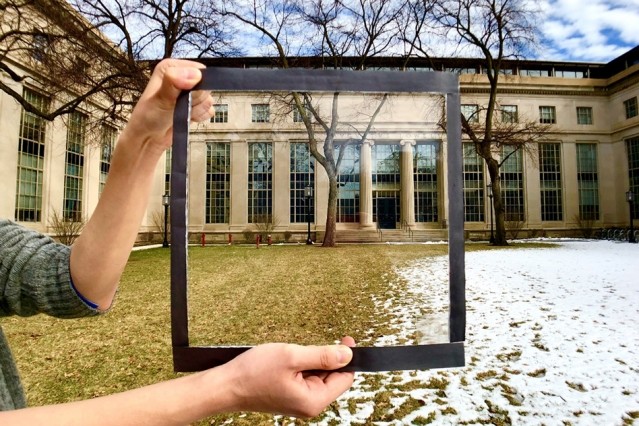MIT’s new see-through film rejects 70 percent of incoming solar heat
To cover the windows, this material can be used to save air conditioning costs.
Office and residential buildings are increasing the air-conditioning and energy bills to fight with the summer heat.
MIT engineers developed a film on the windows of a building that would reflect 70 percent of the sun’s warmth. The film is highly transparent under 32 degrees Celsius or 89 degrees Fahrenheit.
Above this warmth, researchers say the film acts as an independent system to reject heat. They estimate that the air conditioning and energy costs of the building can be reduced by 10 percent if each window is covered with this film.
The film is similar to a transparent plastic wrap and its heat rejection properties come from small microparticles embedded in it. These microparticles are made of a phase-modifying material that shrinks when exposed to 85 degrees Fahrenheit or higher temperatures. In their more compact configuration, the microparticles normally give the transparent film a more transparent or icy appearance.
 The film applied to the windows in summer allows a good amount of light, but can also passively cool a building. Nicholas Fang, a professor of mechanical engineering at MIT, says the material offers an affordable and energy efficient alternative to existing smart window technologies.
The film applied to the windows in summer allows a good amount of light, but can also passively cool a building. Nicholas Fang, a professor of mechanical engineering at MIT, says the material offers an affordable and energy efficient alternative to existing smart window technologies.
”Smart gadgets on the market are either not very effective in rejecting heat from the sun or, like some electrochromic windows, they may need more power to operate them, so you pay to open the windows opaque, as says Fang.
A separation of comfort
The researchers created a solution of the heat shielding microparticles, which they applied between two sheets of 12 x 12 inch glass to create a film coated window. They drew light from a sun simulator into the window to imitate the incoming sunlight and found that the film was frozen in response to the heat. When they measured the sun’s rays transmitted from the other side of the window, researchers found that the film could reject 70 percent of the heat generated by the lamp.
The team also covered a small calorimetric room with heat rejecting film and measured the temperature inside the room as it burned the light from a solar simulator. The film was heated to about 102 F, the inside temperature - yaklaşık about the temperature of the high fire ’, Fang notes. I stayed in a more tolerable way with the film inside the room.
“This is a big difference,” says Fang. “You can make a big difference in comfort.”
“Windows have become a major bottleneck in building efficiency,” says Xiaobo Yin, associate professor of mechanical engineering at the University of Colorado at Boulder. Akıllı Smart windows that regulate solar energy reception can potentially be a game changer. The biggest advantage of this work is the material that significantly improves the applicability and the feasibility of intelligent windows. “
Looking forward, the team plans to carry out further testing of the film to see if it can change its formula and implement it in other ways.


Comments